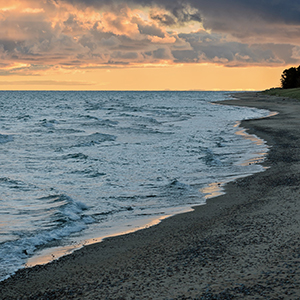Temporal evolution of lake level fluctuations under flood conditions and impacts on the littoral ecosystems

All claims expressed in this article are solely those of the authors and do not necessarily represent those of their affiliated organizations, or those of the publisher, the editors and the reviewers. Any product that may be evaluated in this article or claim that may be made by its manufacturer is not guaranteed or endorsed by the publisher.
Accepted: 18 July 2023
Authors
Lake levels fluctuations are conditioned by seasonal variability, water resources management and climate change. Recent studies have shown that global warming potentially affects the risk of flooding and that the decisive factor for flood events is not temperature, but precipitation characteristics and hydrological conditions. Flood events have numerous impacts on social, economic and environmental aspects depending on how humans have altered lands, natural rivers and lake dynamics. Flood protection measures can cause conflicts with conservation measures and with ecosystem services because natural capital is not considered able to control floods and to contribute control floods and that it can contribute to human health and safety. In this paper we analysed the flood events in Lake Maggiore for return time periods of 3 – 5 – 10 – 25 – 50 – 100 – 250 – 500 years, considering the flood frequency in the last ten years using 1868-2021 as a reference period. We discussed the probability distribution of flood peaks, the correlation and linear regression between the lake level fluctuations and macroinvertebrates occurrence. We also presented lake coasts flood hazard mapping. The probability distribution that better describes the annual peak level is the Gumbel function, while for spring and autumn flood events the better distribution is the Log-Pearson type III. One of the historical flood events in terms of magnitude was in 2000, characterized by a return time of about 50 years. The last flood event in 2020, was characterized by a return period of about 10 years. Considering the seasonal frequency of flood, the autumn magnitude was higher than the spring one, and the differences between seasonal flood events progressively increased. The results suggested a high probability of a flood event every three years and also a forecast of a flood of about 197 m asl (3.14 m above the average lake level) every 10 years. Raising the lake level will affect the reed bed area from 193 m asl, and it will be more effective at 194.5 m (up to a 10% reduction). During flood events, the whole reed bed area is submerged. As regard macroinvertebrates composition and abundance, the first results show significant negative relationships between all sampling stations altogether vs the abundance of Cladotanytarsus sp. (Chironominae) and nearly significant positive relationships between water levels at Magadino vs Pscectrocladius sordidellus (Orthocladiinae) abundances. These few results are perhaps due to the current limited data availability.
Ethics Approval
Silvia Quadroni, University of Insubria, Varese, ItalySupporting Agencies
Regione Lombardia/EU–INTERREG Italia Svizzera 2014/2020How to Cite

This work is licensed under a Creative Commons Attribution-NonCommercial 4.0 International License.






